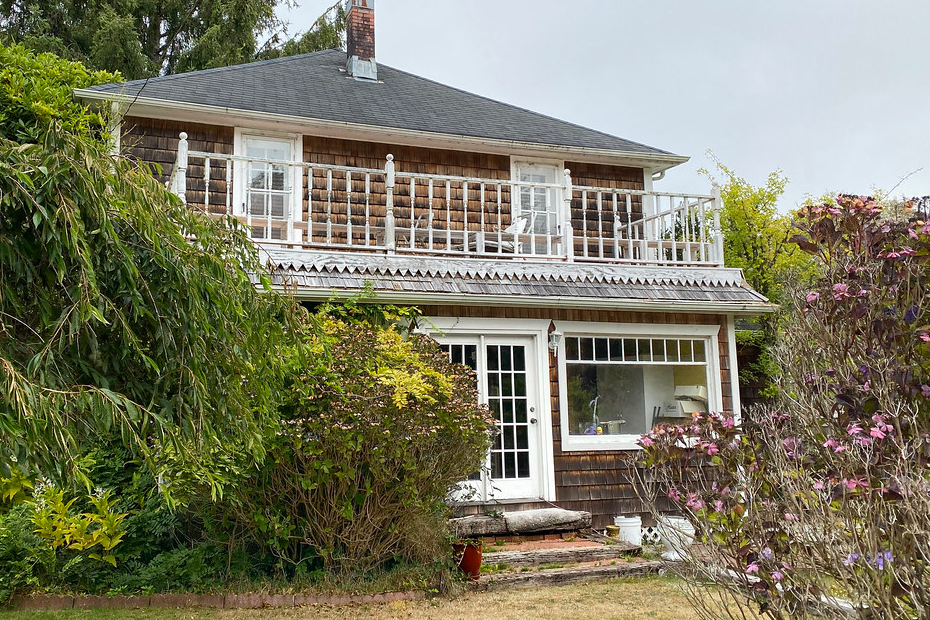Mid-Century Modern architecture and design emerged in the mid-20th century and was characterized by a focus on functionality, simplicity, and a blend of traditional and modern styles. This style was influenced by the Bauhaus movement, which emphasized the use of modern materials and techniques to create functional, aesthetically pleasing buildings and objects.
One key feature of Mid-Century Modern architecture is the use of clean, geometric lines and shapes. This can be seen in the use of rectangular windows, flat roofs, and sleek, streamlined facades. The focus on functionality is also evident in the use of large windows and glass walls, which not only allow for plenty of natural light, but also create a sense of openness and connection to the outdoors.
Mid-Century Modern design was also characterized by the use of natural materials such as wood, stone, and concrete. These materials were often left unfinished or minimally treated, creating a raw, natural aesthetic that was in contrast to the more ornate and decorative styles that were popular at the time.
One of the most iconic examples of Mid-Century Modern architecture is the Case Study Houses program, which was a series of experimental homes built in the 1950s and 60s in Southern California. These houses were designed to showcase the use of modern materials and techniques, and many of them became iconic examples of the Mid-Century Modern style.
Mid-Century Modern architecture and design was a significant movement that focused on functionality, simplicity, and the use of modern materials and techniques. It has had a lasting influence on the way we design and build, and its aesthetic continues to be popular today.
Deconstructivism is a movement in architecture and design that emerged in the late 20th century and is characterized by a disregard for traditional forms and structures. It is a reaction against the rational, functionalist approach to design that had dominated the modernist movement.
Deconstructivist architects and designers reject the idea that form should follow function, and instead embrace the idea that form should be shaped by the materials and construction methods used. This leads to the creation of buildings and objects that are often fragmented, asymmetrical, and seemingly chaotic.
One of the key figures in the deconstructivist movement is architect Frank Gehry, who is known for his use of unconventional materials and his incorporation of seemingly random elements into his designs. His work, such as the Guggenheim Museum in Bilbao, Spain, is often described as “unfinished” or “exploded,” as it seems to be in a state of constant change and evolution.
Deconstructivist design also often incorporates elements of appropriation and pastiche, as designers draw inspiration from a variety of sources and incorporate them into their work in a way that blurs the lines between different styles and periods. This can create a sense of tension and disorientation, as the viewer is presented with a seemingly chaotic array of elements that do not fit together in a traditional sense.
Overall, deconstructivism architecture and design can be seen as a rejection of traditional forms and structures in favor of a more experimental and expressive approach to design. It challenges the viewer to think outside the box and to consider the underlying meanings and implications of the designs they encounter.
Deconstructivist Architecture On Our Pinterest Board
Postmodern architecture and design emerged in the late 20th century as a reaction against the modernist architectural movement that had dominated the previous decades. Modernism, with its focus on functionality, simplicity, and a lack of ornamentation, was seen as lacking in personality and character. Postmodern architecture and design, on the other hand, embraced a more diverse and expressive style, incorporating elements from various historical periods and cultural influences.
One of the key characteristics of postmodern architecture is its use of pastiche, or the blending of different architectural styles. This can include the incorporation of classical elements such as columns, arches, and decorative details, as well as the use of unconventional materials and shapes. Postmodern architects often rejected the idea of a single “correct” architectural style, instead embracing the idea that buildings could be expressive and personal.
Another defining feature of postmodern design is its use of irony and humor. This can be seen in the use of playful, exaggerated forms, as well as the incorporation of kitschy or Pop Art-inspired elements. This sense of playfulness was meant to challenge the seriousness of modernist architecture and to create a sense of fun and whimsy.
Postmodern architecture and design also focused on the idea of context, or the way that a building or object fits into its surroundings. This can be seen in the use of materials and colors that blend with the surrounding environment, as well as the incorporation of local cultural elements.
Postmodern architecture and design rejected the rigid, functionalist approach of modernism in favor of a more expressive, diverse, and playful style. It embraced the idea that buildings and objects could be expressive and personal, and that they could be created in a way that fit seamlessly into their surroundings.
Post Modern Architecture On Our Pinterest Board
Very interesting article by way of The Atlantic, how preservation can sometimes lead to, create obstacles to social progress. Not really an alternative view, but food for thought. “It seems incredible that a mid-century marvel like Geller I should fall… Read More »Historic Preservation Sometimes Obstacle to Social Progress
